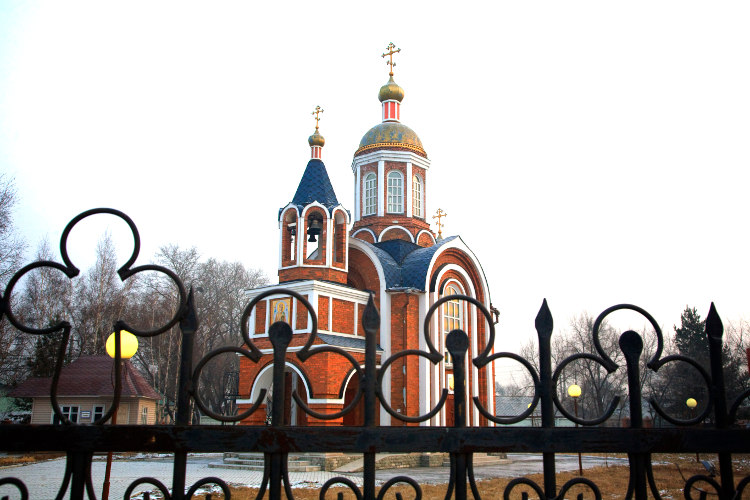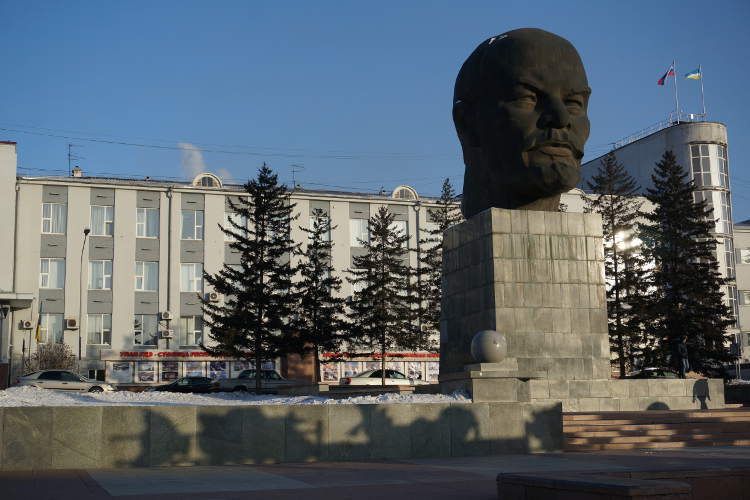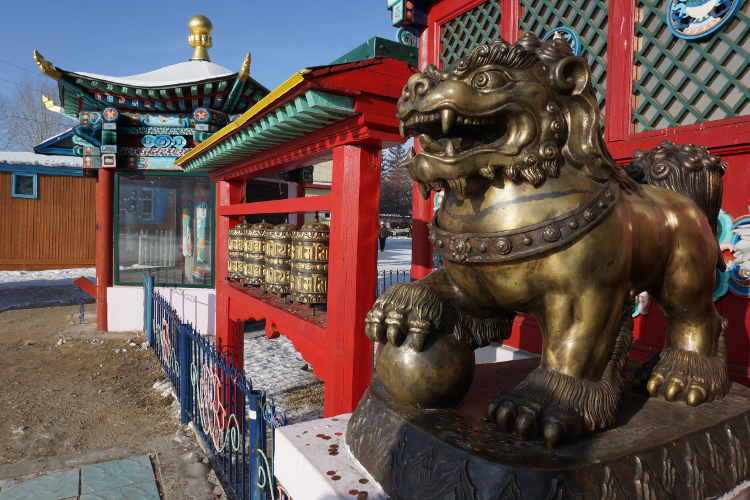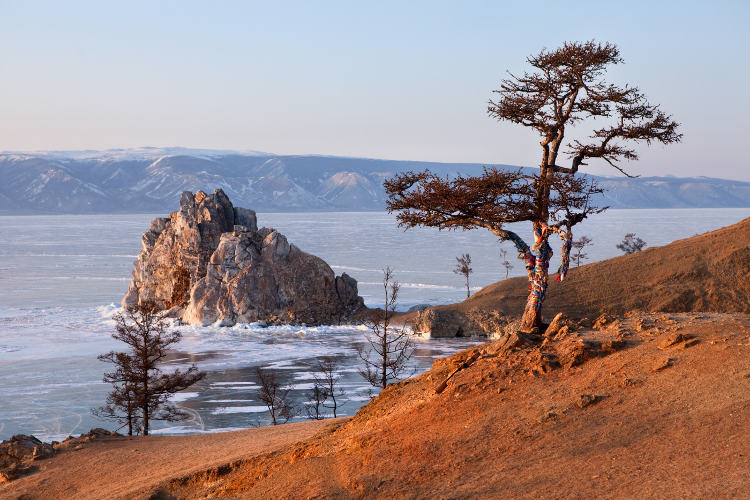
First things first: for all the romantic images associated with the Trans-Siberian Railway, it’s not a spontaneous hop-on/hop-off affair. You’ll need to decide your route, secure relevant visas, and buy tickets for each leg of the journey (either in situ or from your home country through an agency). The route from Moscow to Vladivostok only requires a Russian visa; if you’re finishing in Beijing you’ll also need one for China; and if you’re going via Ulaanbaatar, a visa for Mongolia.
Unless you’re planning a non-stop journey, reserve accommodation anywhere you’re pausing along the way. In summer, popular Lake Baikal guesthouses will book up; in winter, some hotels may shut down – either way, it pays to plan ahead.
Finally, get your head around the Cyrillic alphabet and Russia’s multiple time zones. Even if you don’t graduate to conversational Russian, the alphabet is essential to decipher train departure boards. Russian train tickets list your departure following Moscow time (even if you’re five hours ahead in Ulan-Ude). Consider setting up a couple of clocks on the home screen of your phone or tablet, referencing a couple of time zones you’ll be crossing.

If you’re able to carry gear on your back, a rucksack keeps your hands free to flash tickets and passport. If you must go with a roller suitcase, choose a dainty one – train corridors are narrow.
The first kit to go in your bag is a ‘train uniform’: light, comfortable clothing you can snooze in, but not so scruffy you’ll attract gasps in the dining carriage. Whatever the season, Russian train carriages are kept toasty warm – sometimes stiflingly so. Loose cotton slacks and a T-shirt are ideal, plus a light sweater or hoodie. And don’t forget slip-on shoes or slippers. Trust us, there’s nothing like stepping on the floor of a well-frequented 3rd-class toilet stall to make you want to burn your socks.

Outside the train, think layers. Alongside a selection of T-shirts, jeans and undies bring a woollen base layer and some thick socks – even in summer, the evenings get chilly. Summer travellers stopping by Lake Baikal won’t want to forget insect repellent and a head net for lakeside hikes.
Choose footwear wisely. Comfortable, broken-in hiking boots will see you from city sightseeing to outdoor exploring. Resist the urge to weigh down your luggage with flashy shoes and your best threads. Outside Moscow there is less ‘face control’ and more casual bars that won’t balk at backpackers in jeans.
For a journey in winter, add a fleece, down-lined coat and/or ski jacket, leggings to layer under your jeans or even padded trousers (the kind suitable for winter sports). Siberia’s chill is felt most painfully in your extremities, so don’t forget a hat and quality gloves. You might want to invest in ski gloves, designed to protect your digits down to -30C.
Keen photographers should consider buying ski gloves and separate merino glove liners. Wearing just the liners gives you enough dexterity to wield a camera and protects your hands for a few precious seconds while you point your lens at a snow-dusted cathedral.

The fountain of sustenance aboard your Trans-Siberian train is the samovar, a tureen brimming with hot drinkable water. With nowhere on the train to refrigerate food, pack snacks that only need hot water for preparation: pots of instant noodles, sachets of oatmeal and soup, and a treasure chest of tea bags and coffee. Anything perishable you’ll have to eat within the first few hours of your journey, before your cheese and yoghurt start sweating in the warm air.
Bring your own drinking vessel, ideally a reusable cup with a fitted lid. You can borrow or buy mugs on board but they don’t have lids, which means a delicate samba back through the jolting train compartment as you attempt not to scald yourself.
Don’t try to cram your rucksack with food for the entire trip. There’s plenty of opportunity to restock along the way, even if you’re travelling Moscow–Beijing in a single journey. Vendors ply the station platforms with snacks (although there are fewer in winter) and shops inside train stations offer plenty of fresh food, dumplings, and samovar-friendly instant snacks. Before disembarking, double-check the timetable (usually pasted by the carriage door) or ask your provodnitsa (carriage attendant) how long the train is pausing – watching your train rumble away is a heavy price to pay for instant noodles.
Snack trolleys on board can also tide you over (although they’re expensive) and you can package in meal service, brought to your compartment, when you buy your ticket. But you’ll have more choice if you bring cash for a couple of meals in the dining carriage.

Feeling the strain of 15 hours spent staring at birch forests? These lightweight items will make your trip all the merrier.
Sleep kit Even if you aren’t a light sleeper, bring earplugs and eyeshades to guard against the bright beams of oncoming trains and snoring bunkmates.
Headphones Fellow passengers may be generous enough to share their taste in frenetic Russian pop music. Quality headphones and a music player can block it out where earplugs fail.
E-reader Indulge yourself when downloading books before your trip. If you don’t have an e-reader, consider hostel book swaps along the way, to avoid hauling well-thumbed paperbacks home. Good intentions to read War and Peace can get eroded by bleary-eyed 3am passport checks, so bring along your guilty literary pleasures: gangsters, aliens or 50 Shades.
Spork An all-purpose cutlery item, ideally heatproof, will help you shovel down soups, slurp noodles and stir up drinks from the samovar.
Spare toilet roll You may not need it, but you’ll never regret squashing this into a corner of your rucksack.
Portable recharger First-class compartments usually have a socket, but in 2nd class and lower you’ll be fighting a pouting teenager over the single charging point in your carriage. If you’d rather not be without your phone, e-reader or tablet, bring backup batteries or a portable recharger.
Notepad Even if you don’t rate the quality of your scribbles, bring a notebook and pen. It’s a handy way to communicate with train staff or other travellers by doodling or jotting down numbers. And as miles of taiga unfurl, with lake-shore villages and turquoise-painted houses rushing past your window, thoughts may bloom in your mind that you’ll want to capture forever.